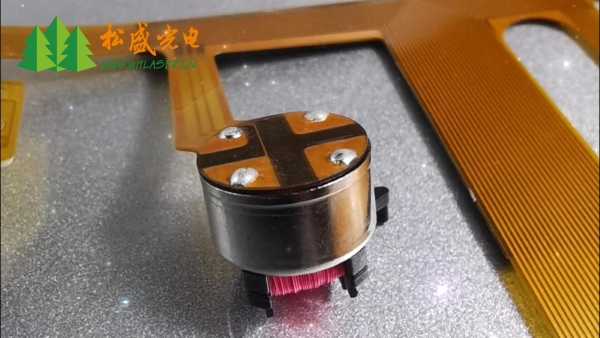Application of Laser Automated Soldering in Electronics Manufacturing
The widespread adoption of laser automated soldering systems in electronic assembly
With the increasing integration of FPC flexible printed circuits in end-user devices - including cutting-edge smart devices like smartphones, laptops, automotive components, and medical equipment - the electronics industry has entered an era of high-density assembly. The introduction of next-generation electronic devices, novel CHIP components, advanced ceramic piezoelectric transformers, and innovative electronic materials/processes has driven extensive application of laser automated soldering systems in FPC and electronic component manufacturing.

Laser Solder Paste Welding Process Flow
Songsheng Optoelectronics' automated laser soldering system utilizes laser thermal energy to melt solder paste, representing an advanced laser soldering technology. The core characteristic of this laser soldering process lies in its utilization of high-energy laser beams to achieve rapid localized or micro-scale heating for precision soldering applications. Compared with conventional soldering methods, laser soldering offers irreplaceable technical advantages.

Solder Paste Welding Diagram for Motor Rotor FPC Flexible Circuit Boards
Conventional soldering techniques exhibit several fundamental limitations when applied to FPCs and electronic components. The component leads and PCB pads tend to introduce metallic impurities such as Cu, Fe, and Zn into the molten solder, while the high-speed flow of liquefied solder in ambient air readily forms oxides. During traditional reflow soldering processes, electronic components themselves are subjected to rapid heating to soldering temperatures, creating significant thermal shock that may damage thin-profile packaged components, particularly temperature-sensitive devices. Moreover, the global heating approach necessitates that FPC flexible circuits, PCB boards, and electronic components all undergo identical heating, soaking, and cooling cycles. Given their differing coefficients of thermal expansion, the alternating thermal cycles generate internal stresses within the assembly. These residual stresses compromise the fatigue strength of solder joints and ultimately degrade the reliability of electronic assemblies.
Laser soldering represents a localized reflow soldering methodology. The laser solder paste welding process comprises two distinct phases: initially, the laser solder paste undergoes heating while simultaneously preheating the solder joints; subsequently, the applied laser solder paste completely melts, achieving full wetting of the solder pads to ultimately form robust interconnections. By employing laser generators and optical focusing assemblies, this technique delivers exceptionally high energy density and superior thermal transfer efficiency through its non-contact soldering mechanism, effectively circumventing all the aforementioned challenges associated with conventional soldering approaches.
Features of Songsheng Optoelectronics Laser Constant-Temperature Soldering System
The laser constant-temperature soldering system utilizes laser diodes as the heat source to achieve localized non-contact heating, eliminating the need for soldering iron tip replacement. With advantages including a small laser beam diameter, its key characteristics are:
High-precision laser processing with a minimum spot diameter of 0.1mm, enabling soldering of micro-pitch mounted components and chip devices.
Rapid localized heating with minimal thermal impact on the substrate and surrounding components, ensuring excellent solder joint quality.
No consumable soldering tips required, delivering high efficiency during continuous operation.
Non-contact localized heating produces minimal surface residue and aesthetically superior results.
Non-contact measurement of solder temperature for precise thermal control.

Dual-X Dual-Y Dual-Station Solder Paste & Wire Feeding Welding Equipment
Application of Laser Automated Soldering Systems in Micro-Welding for Electronic Circuit Boards
As previously mentioned, modern electronic devices are evolving toward multifunctionality, high integration, and miniaturization. Flexible printed circuits (FPCs), PCBs, and electronic components are widely utilized in this field. As an advanced robotic welding technology, the system achieves qualitative improvements in FPC welding
Contact: Mr.Xiao
Phone: +86-13385280662
E-mail: market001@whlaser.cn
Add: Room 02, Floor 5, Building 9, Gezhouba Sun City, No. 40, Gaoxin 4th Road, Donghu New Technology Development Zone, Wuhan